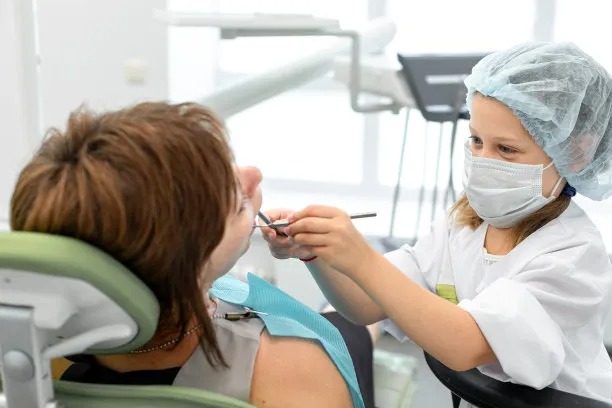Essential Precautions to Take Before and After Getting a Dental Filling for Optimal Oral Health
Summary: Dental fillings are essential for restoring teeth affected by decay or injury. However, proper precautions before and after the procedure are crucial for ensuring optimal oral health. This article will explore four key areas: understanding the dental filling process, maintaining oral hygiene, being aware of dietary restrictions, and managing pain and sensitivity. Each section will provide essential precautions to help patients avoid complications and promote a healthy recovery after dental fillings.
1. Understanding the Dental Filling Process

Before getting a dental filling, it is important to understand what the procedure entails. Dental fillings are commonly used to repair cavities and restore the shape of the tooth. The dentist will first clean out the decayed portion of the tooth, which can sometimes require local anesthesia to numb the area. Understanding this process helps to mentally prepare the patient, alleviating anxiety associated with dental visits.
Additionally, different materials can be used for fillings, including composite resins, amalgam, and gold. Knowing the advantages and disadvantages of each material can help patients make informed decisions about their treatment. Discussing options with the dentist allows patients to choose a filling that suits their needs, whether they prioritize aesthetic appeal or durability.
Finally, patients should also inquire about any specific pre-treatment requirements, such as avoiding certain medications that might increase bleeding. A well-prepared patient is more likely to have a smoother experience when getting a filling.
2. Maintaining Oral Hygiene Pre- and Post-Procedure
Good oral hygiene is crucial before and after dental fillings. Before the procedure, maintaining proper brushing and flossing routines can minimize the risk of infection and complications. Patients should ensure their teeth and gums are in excellent condition leading up to their appointment to promote healing and overall health.
After getting a filling, it is equally important to be mindful of oral hygiene. Dentists often recommend waiting at least 24 hours before resuming regular brushing and flossing, especially if the area is still sensitive. However, gentle rinsing with warm salt water can be beneficial in the immediate aftermath to help reduce swelling and promote healing.
In addition to brushing and flossing, using an antimicrobial mouthwash can be advantageous post-procedure. This simple regimen can help prevent plaque buildup around the newly filled tooth, thus safeguarding against future decay and complications.
3. Being Aware of Dietary Restrictions
Another crucial aspect before and after a dental filling is managing dietary intake. Prior to the filling, patients are often advised to avoid heavy meals, especially if sedation or anesthesia is used during the procedure. Eating lighter meals can help minimize discomfort and reduce the risk of nausea related to sedation.
Post-procedure, it is important to avoid hard, sticky, or chewy foods for at least 24 hours. These food types can exert undue force on the newly filled tooth, risking damage to the filling or causing discomfort. Stick to soft foods that are easy to chew, such as yogurt, mashed potatoes, or smoothies, to allow the filling to set properly without stress.
Furthermore, hot and cold foods should be approached with caution in the first few days after the filling, especially if there is sensitivity. This careful management of diet can contribute significantly to a positive recovery experience.
4. Managing Pain and Sensitivity After the Filling
Post-filling, it is normal to experience some level of pain or sensitivity in the affected tooth. Patients should be prepared for this and understand that it is part of the healing process. Over-the-counter pain relievers like ibuprofen or acetaminophen can effectively manage discomfort. Always consult with your dentist regarding the appropriate dosage and timing.
If pain persists beyond a few days or worsens, it is essential to contact the dentist for further evaluation. This could indicate a problem with the filling or an underlying issue that requires attention. Monitoring the healing process and being proactive if unusual symptoms arise can prevent more significant problems down the line.
Additionally, sensitivity to hot and cold may occur after the filling. This is typically temporary, but if it continues, discussing this with the dentist can help find a solution, such as using a desensitizing toothpaste or further adjustments to the filling.
Summary:
In conclusion, dental fillings are a vital part of maintaining oral health, but understanding the necessary precautions is essential for a smooth experience. Patients must prepare for the filling process, maintain excellent oral hygiene, adhere to dietary restrictions, and manage pain effectively post-procedure. Taking these precautions can lead to successful treatment and a speedy recovery, all while safeguarding your long-term dental health.
This article is compiled by Vickong Dental and the content is for reference only.


